The reasons why garlic rots in the garden: what to do and how to deal with it?
According to certain signs, the vegetable grower can find out why the garlic is rotting in the garden. This will help take action and avoid large crop losses. You can list the main reasons for rotting bulbs:
- fungal diseases;
- bacterial rot;
- viral diseases;
- pests.
Simple agricultural techniques will help reduce the risk of infection:
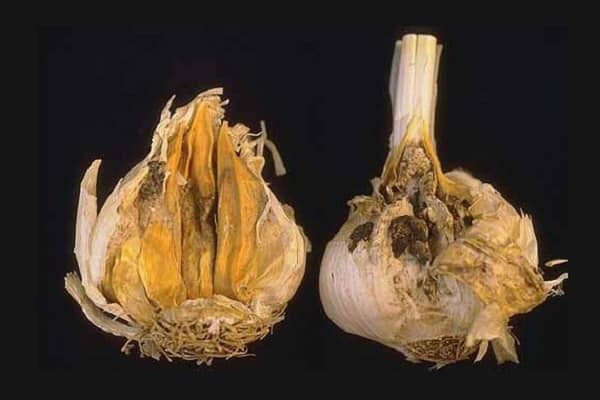
- Compliance with the rules of crop rotation. The annual change of the place for crops on the site helps to avoid the multiplication of microorganisms and pests that infect a certain group of plants. For garlic, the return time to the garden is at least 4–5 years. The best predecessors are young cabbage, cucumbers,
- Choosing a sunny and elevated place on the site for planting garlic. For this culture, especially for winter varieties, spring stagnation of water after the snow melts is dangerous. To prevent garlic from rotting, you can protect the plants by arranging a high bed.
- Conscientious autumn cleaning of the site from all plant debris and annual digging. Most pests and microorganisms are able to overwinter on forgotten rotting bulbs and stems, and move to vulnerable young shoots in the spring.
- Use healthy seed. Before planting, you need to sort out and weed out all garlic cloves with signs of disease. Store seed bulbs in a cool, dry place (+ 1–2 –C) in small linen bags or boxes with holes. It is useful to renew stocks of planting garlic by growing bulbs (for arrowhead varieties).
- Thoroughly dry seed bulbs before storage.
- Treatment of planting material with fungicides before planting.
- Timely watering and loosening of the beds.
- Removal of diseased plants outside the site.
- Preparation of a fertile neutral soil mixture in the garden and timely feeding with complex fertilizers.
- Compliance with the optimal timing of planting and harvesting.

Fungal diseases
The main culprits of garlic rotting in the garden and during storage are mushrooms. Irregular watering coupled with unfavorable weather conditions provokes the development of pathogenic microorganisms.
To reduce the risk of infection through contaminated seed, pre-sowing treatment of chives with fungicides is carried out: Maxim, Fitosporin, HOM.
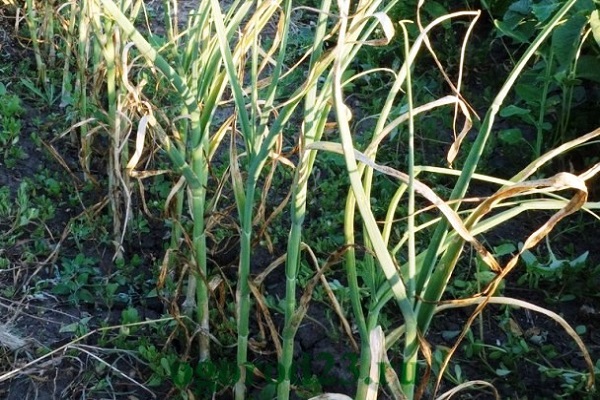
Fusarium (bottom rot)
The optimal conditions for the growth of imperfect fungi of the genus Fusarium are high humidity and warm weather (above 13-20 ° C). Therefore, most often this disease occurs in the southern regions.
Fusarium infection affects many cultivated plants and usually hibernates on plant debris.The reason for the rapid infection and decay of the bulbs is mechanical damage by pests and during harvesting.
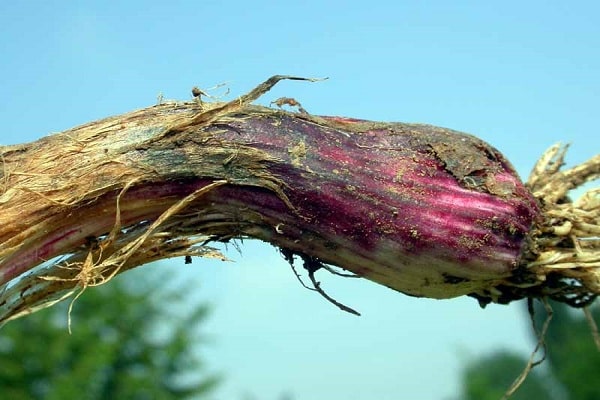
Symptoms:
- After the formation of 5–7 leaves, their tips begin to turn yellow and wither, gradually capturing the whole plant.
- Brown stripes can be seen on the leaves. A small pink bloom sometimes appears in the sinuses.
- If you try to pull the garlic out of the ground, it easily separates, since the roots rot quickly with fusarium.
- In bulbs and cloves, the bottom softens and becomes covered with light mycelium. When opening the bulb between the cloves, you can also notice traces of mycelium.
When a fusarium disease is detected, diseased plants are urgently removed from the site and, regardless of weather conditions, watering of the beds is temporarily reduced.
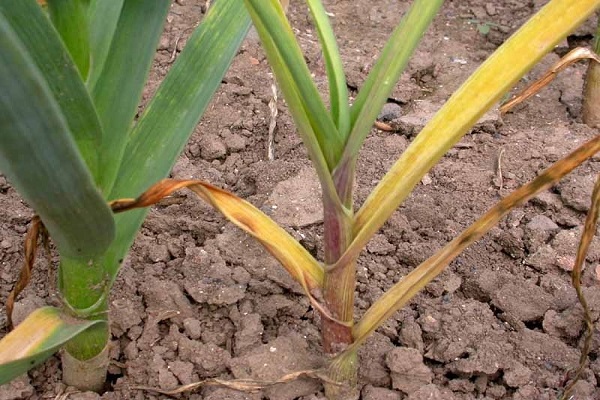
White rot of garlic
Sclerotium cepivorum Ber is a frequent intruder in the garlic bed and the reason why bulbs rot. What White Rot Does With Garlic:
- The first sign of infection visible to the grower is the yellowing of the tips of the leaves, which quickly covers the entire green part of the plant.
- If you pluck a diseased garlic from the ground, a white bloom of fungal mycelium is visible on the roots. It quickly enters the bulb through the bottom. Garlic begins to rot and takes on a watery appearance.
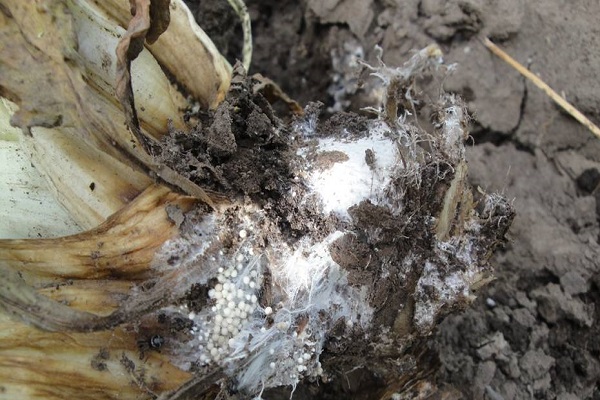
Often, the owner of the garden does not attach importance to the drying of the garlic foliage and learns about the disease when the bulbs are already rotting.
Fungicides help to save most of the crop with timely processing and removal of infected plants from the site (Uniform, Switch, Custody).
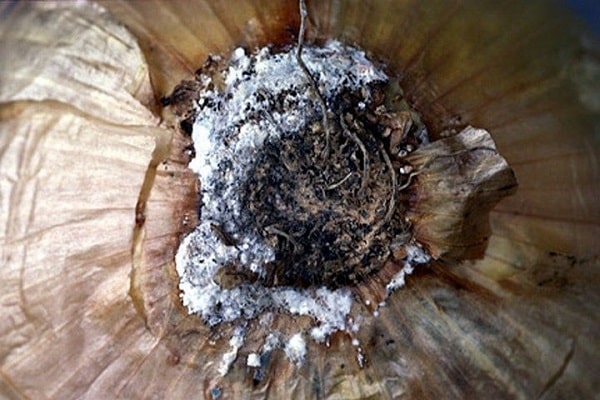
Downy mildew (downy mildew)
Fungal disease of most bulbous, the causative agent of which is Peronospora destructor Casp. Very high humidity and cool weather (7-16 ° C) are suitable for growth. Bulb decay is facilitated by summer with frequent fogs, prolonged precipitation. Under such conditions, peronosporosis can destroy most of the crop in 2–3 weeks. After the onset of dry sunny days, the spread of infection slows down.
In order not to miss the initial stage of the disease, you need to know the main symptoms:
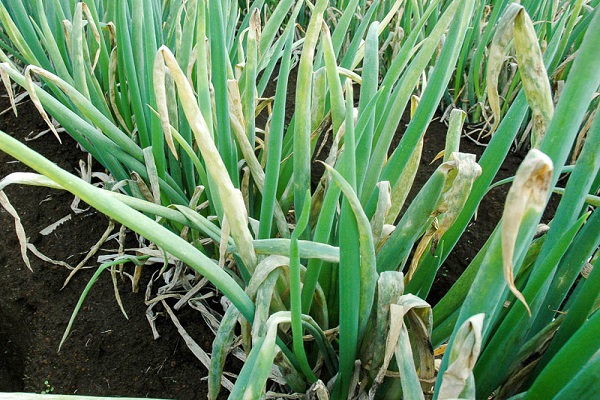
- The leaves are covered with yellowish oval spots.
- In very humid weather, plants show a light purple bloom of spores.
- Leaves curl and fall off. Gradually, the infection captures the entire aerial part, descends into the bulb and starts decay processes.
Downy mildew overwinters in the soil in forgotten bulbs or in seed.
If a disease is detected, the beds must be treated with fungicides: Quadris, Areva Gold VG, Ridomil Gold.

Bacterial rot
Mechanical damage to garlic is the main reason why bacterial rot affects garlic.
Insect pests that violate the integrity of the bulbs are usually the culprits. Infected teeth become covered with streaks and specks, the flesh turns glassy, acquires a pearlescent hue and a "boiled" look. Such garlic has an unpleasant putrid odor and gradually turns into mucus.
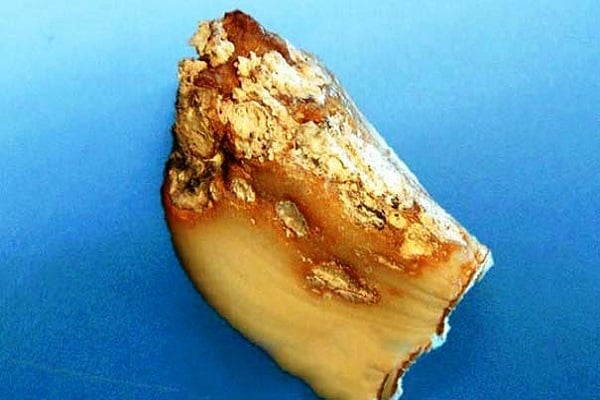
The danger of this infection is that the final decay of garlic usually occurs during storage and is difficult to recognize by the appearance of an unopened bulb.
How to deal with bacterial rot:
- insect pest control;
- in the fall, the garden is conscientiously cleaned of organic residues;
- top dressing with mineral fertilizers with a high phosphorus content;
- compliance with crop rotation.

Pests
A common reason why garlic rots in the ground is damage to plants by insect pests. Violation of the rules of crop rotation, impoverished soils and unstable watering of the beds can lead to the rapid spread of pests and a large loss of yield. For integrated pest management, general-purpose insecticides (Intavir) are used.

Onion fly
Onion fly larvae feed on garlic pulp.The insect hibernates in the soil at a depth of 10–20 cm in the form of a pupa. During flowering of horticultural crops, the fly crawls to the surface and after 5-10 days lays white eggs on garlic or nearby on the soil. After 3–7 days, the larvae appear and gnaw their way into the bulbs.
During the season, 2-3 generations of the onion fly have time to appear. The reason for the rapid growth of the onion fly population is the rainy summer. Damaged bulbs quickly rot due to secondary fungal and bacterial infections. Garlic leaves turn yellow, curl and dry out. Larvae can be seen when the bulb is cut.
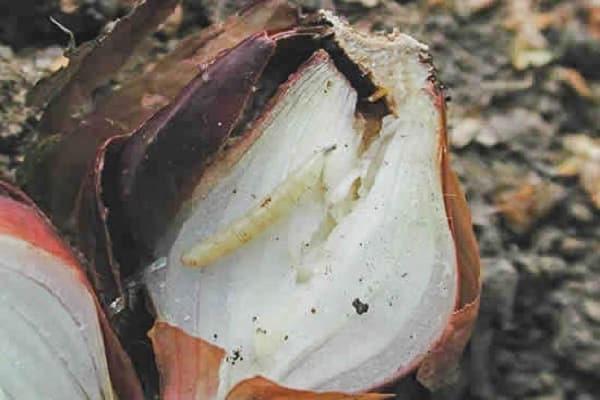
The following measures will help protect the garlic beds:
- Deep autumn digging of the site.
- Mulching beds with garlic peat, as onion fly does not like peat soils.
- Planting carrots between rows.
- Dusting plants once a week, from late April to mid-July, with a mixture of 10 g of tobacco dust, 100 g of ash and 5 g of ground pepper.
- Spraying soil and plants with the following composition: 2-3 teaspoons of ground red pepper and 250 g of tobacco dust are stirred in 2-3 liters of boiling water. Insist for three days in a warm place and dilute in a bucket of water with the addition of 50 ml of liquid soap. Processing is carried out every 7 days starting from the end of April.

Onion root mite
This small eight-legged pest of the species Rhizoglyphus echinopus, under suitable conditions (23–26 ⁰C and humidity 60–65%), can harm a significant part of the garlic and onion harvest. He lays 200-300 eggs in the bulb, from which the larvae of the root mite hatch after 7-8 days. In a month, the new generation is ready for further reproduction.
Distribution methods:

- the tick is easily carried by the wind;
- he is able to move between plants independently;
- the pest is able to overwinter on garlic and onion debris in the soil or in the seed bulbs between the cloves.
The tick gnaws at the bottom of the bulb, because of which it lags behind and the rotting of the garlic in the garden begins. The leaves of diseased plants turn yellow, when the bulb opens, brown waste products of the tick are visible between the teeth.
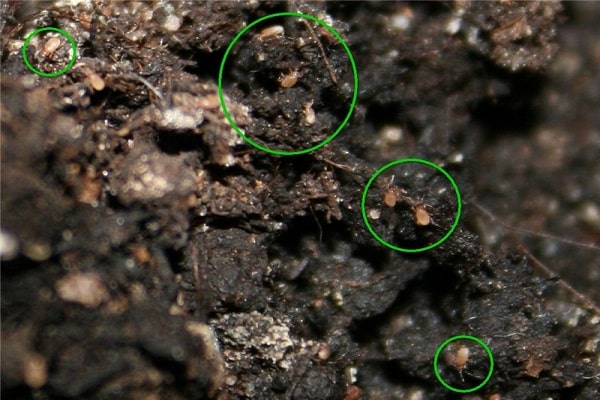
Control measures:
- infected beds can be treated with an insecticide (Keltan or Rogor);
- after harvesting, it is useful to dry the garlic for a week at a temperature of 30–35⁰С;
- Before planting, etch the teeth for 20 minutes in a 0.8% solution of colloidal sulfur.

Onion stem nematode
First place among pests of garlic belongs to the stem nematode, the worm of the species Ditylenchus allii Bej. In heavy clay soils, it is able to destroy most of the crop. The cause of garlic decay is not only mechanical damage to the bulbs, but also secondary damage by fungi and bacteria.
The remnants of garlic plants, chives and seed bulbs forgotten in the ground are suitable for wintering for these pests. Larvae and adults feed on juicy parts of cloves and stems. Both high humidity and cool weather are favorable conditions for distribution.
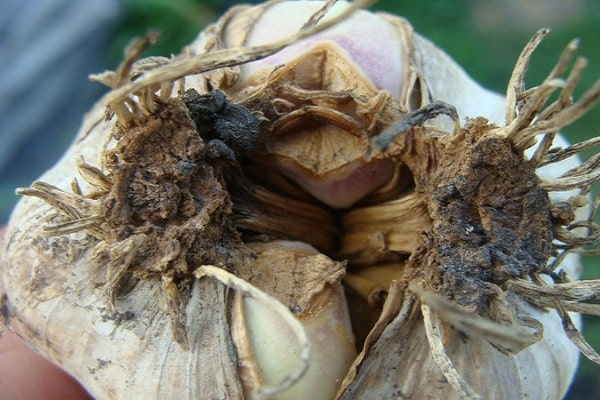
Signs:
- First of all, the worms eat the bottom of the bulbs. The root quickly rots and dies off.
- The scales crack and fall off, the bulb quickly decays.
- The plant noticeably lags behind in development, the leaves are first covered with light stripes, then turn yellow and dry out.
- The infected plant easily breaks off the ground and has an unpleasant putrid odor.
- With late infestation, white traces of nematode penetration into the plant can be seen on the leaves.
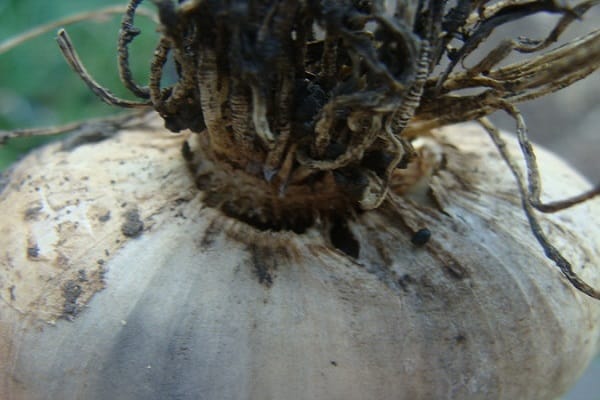
General precautions can be added:
- Relief of heavy soils by introducing loose organic components: peat, straw, sawdust.
- Sow the infected areas with green manure, followed by digging.
- Etching of sowing cloves in a formalin solution of 0.5-1% or an infusion of wood ash.
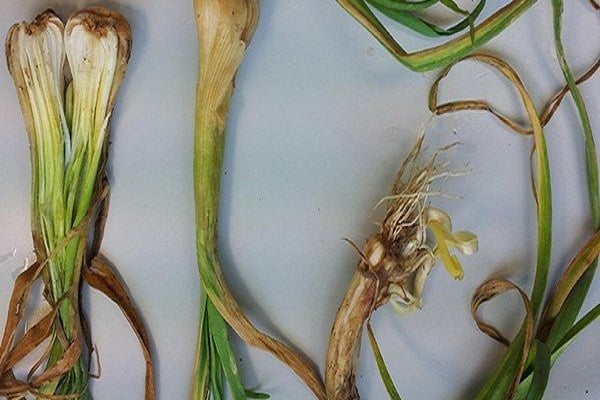
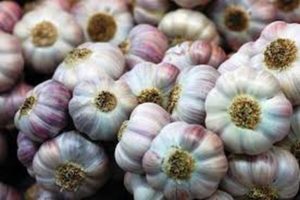
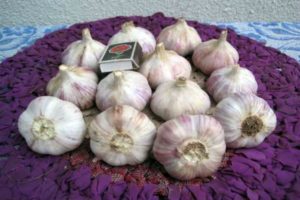
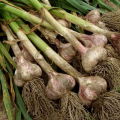
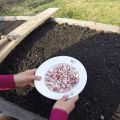

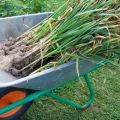



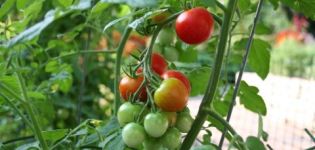
I think that spraying garlic is completely unnatural and badly affects its quality. When rotting, it is enough to simply reduce the amount of watering, without any chemical treatments.
I follow all recommendations. I store the seeds in a dry place. I keep the soil in a loosened state, free from last year's residues. Garlic is always born large. Many fellow villagers have become my regular customers. Summer 2019 began with a heat wave. And spring did not please with abundant rains. I poured the garlic once. Loosened in a timely manner and ... Oh! Attack! After I tackled the potato plot, I come back and ... half of the garden has rotted. I'm terrified. The main thing is now to save the seed material. I will follow all the advice in this article. Everything is very sad. After all, how much labor is required with winter garlic ...
I also rotted all over. I followed the crop rotation and all the tips. The seed was clean and processed on time. The neighbors have the same picture
Obviously, you still missed some rule. Perhaps this concerned watering and loosening the beds or fertilizing with mineral fertilizers. If you and your neighbors used the same seed, then that is the reason.
Force majeure is not excluded: unfavorable weather conditions, cold, humid summer. Usually rot occurs due to irregular watering, the reproduction of fungi.